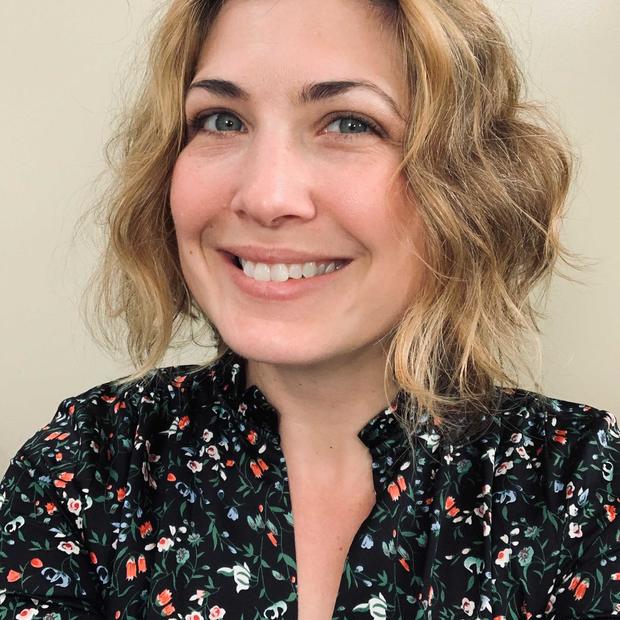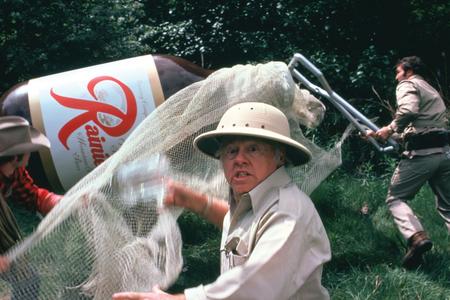The bag is called a wa’paas, and the Yakama have traditionally used it for root-gathering.
This video is part of our “Made There” series about local artisans. View more videos from Seasons 1 and 2.
Bill’s hands move rhythmically as long strands of yarn sweep over her head while she works the fibers over and around, completing the pattern she keeps in her head. She appears almost meditative, her expression focused but relaxed. Two small fawn-colored dogs settle at her feet; a third, more skittish, stands unsure in a darkened hallway.
Bill has spent many hours like this, twisting and maneuvering yarn through warp threads creating traditional wa’paas baskets to generate income and preserve a fine art of her heritage. In the Yakima Valley, Bill is known as a master weaver. Her days consist mostly of weaving, teaching others how to weave, or working through inventory and designs for future projects. The wa’paas Bill and her students create serve a wide variety of purposes. For her, one purpose is to keep the tradition alive.
“My goal was to teach someone so that they would teach someone, so they would teach someone so that I wouldn't be the only one in a certain radius that knew how to make wa’paas,” Bill said. ”And I'm not the only weaver. I know other women who weave and I admire their work and I support their work and they encourage me.“
Bill’s artistic gifts run in the family. Her dad was known for his cedar bark baskets and beadwork. Her mother is a seamstress and has crafted garments for as long as Bill can remember. Her siblings are also artists who make earrings, drawings, quill work and wooden mats and are carrying on the beadwork tradition.
When she was 12, Bill and her siblings received their Yakama names in a ceremony at the longhouse. It’s a sacred event, one she treasures for the greater meaning of it all.
“You receive your identity as a Yakama. And it is said that when you go to heaven and you see the Creator, he calls you by that name and it’s your identity, it’s what you carry, it’s what you live up to,” she said. ”And that day, my Indian name was given to me: Wahpeniat. And I learned later that the translation of that means ‘One who makes good baskets.’”
Though raised in a creative environment in an area she loves, as a child Bill struggled with her Yakama heritage. Instead she turned her attention to other offerings at school, like the Square Dance Club, to avoid too close an association with traditional Yakama activities.
“It was hard growing up on the reservation with a lot of racism and prejudice. And in middle school, I did not like being Native American. I did not like being a young Yakama girl,” Bill said.
That all changed for her when she was crowned Miss Yakama Nation in 1991.
“It taught me our resources as a tribe, our strength as a tribe, our beauty as a tribe, and all the things that we can pass down to the next generation,” she said. ”And it helped me identify myself as Yakama. I’m a woman who is strong, who is creative, who is beautiful, who is knowledgeable, and [the title] helped me grow.”
Bill eventually returned to her artistic roots, focusing on weaving wa’paas. She felt bonded to the work in a way she hadn’t experienced in her youth. She was determined to know the art form inside and out to preserve the knowledge. Each project improved and paved the way for her to start anew. She found herself creating with nature, seeing color schemes in her work that resembled the flowers along the hillsides of the Columbia River Gorge. Her mother noticed patterns that reflected traditional designs. It occurred to Bill that these creations weren’t premeditated through her own thoughts. She always felt the work flowing through her.
“I told my mom, I know these aren’t my ideas, I know they’re not my designs,” Bill said. “I knew there were things I was doing that were traditional, but I wasn’t shown it. I just knew how to create it. And I thought that was really cool.”
People quickly took notice of her work, and she was encouraged to teach the craft. But creating classes was a slow road. Bill tried a number of times to bring together groups of would-be weavers, but found it hard to draw a crowd.
What finally clicked still surprises her. She opened her home to people for casual lessons and had more guests in the first night than she’d had at all her previous class attempts combined. Admittedly, many guests already knew how to weave. They simply wanted the company. But for Bill, it was a sign that a community was forming. She no longer had to fear the loss of a cultural art.
Today, Bill’s classes are well-attended. Local businesses have hosted her and the throng of students gathering to work and chat over balls of yarn. Bill has one rule as a teacher:
“My expectation, if I teach you how to weave and you’re in one of my classes and I need help, I’m going to say, OK, it’s your turn, come help,’” she says. “I feel almost a weight of responsibility because my parents taught me if you know how to do something and someone asks you for help, then you do it.”
Bill’s journey has been filled with highs and lows. It’s all part of her story, which she tries to honor with beauty and gratitude.
More than a thousand baskets later, she is known as a master weaver, acknowledged by her peers as a gifted artist. Perhaps even more remarkable is how she’s been transformed by the power of reconnecting to her roots. She looks back at the young girl she once was, unsure of how to be comfortable in her skin, and smiles at how far she’s come. Wahpeniat – one who makes good baskets – is no longer just the name she was given. It is who she has become. Each day, her work strengthens a growing community. It brings her closer to her mother, who helps with finishing work on the wa’paas. It allows her to engage with an ancestral past and breathe new life into a beautiful tradition.
“I’m just really proud of myself, and I think of that little girl who at 12 did not like being an Indian girl, did not enjoy her culture. And today I just love it. I love every aspect of our culture that I can participate in,” Bill says. “It’s a really beautiful journey.”


